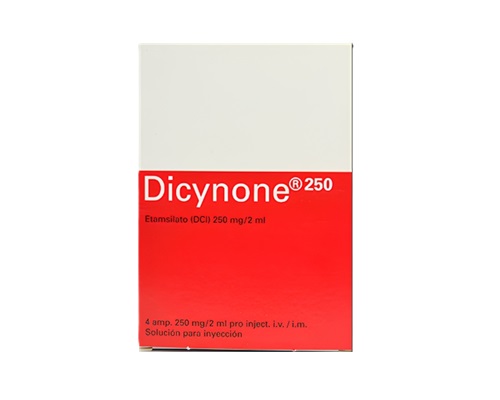Description
Trade name:
Kapron
Compound:
Each tablet contains:
Tranexamic acid 500 mg
Auxiliary components:
Microcrystalline cellulose, hyprolose, sodium carboxymethyl starch, talc, colloidal silicon dioxide, calcium stearate.
Shell composition: hypromellose, titanium dioxide, talc, macrogol.
Properties:
Tranexamic acid is an antifibrinolytic agent that specifically inhibits the activation of profibrinolysin (plasminogen) and its conversion to fibrinolysin (plasmin). It has a local and systemic hemostatic effect in bleeding associated with increased fibrinolysis, as well as anti-inflammatory, anti-allergic, anti-infective and antitumor effects due to the suppression of the formation of kinins and other active peptides involved in allergic and inflammatory reactions. The experiment confirmed the intrinsic analgesic activity of tranexamic acid, as well as the super-sum potentiating effect on the analgesic activity of opiates.
Indications:
– bleeding or risk of bleeding against the background of increased fibrinolysis, both generalized (bleeding during surgery and in the postoperative period, postpartum hemorrhage, manual separation of the placenta, chorionic abruption, bleeding during pregnancy, malignant neoplasms of the pancreas and prostate glands, hemophilia, hemorrhagic complications of fibrinolytic therapy, thrombocytopenic purpura, leukemia, liver disease, previous therapy with streptokinase) and local (uterine, conization of the cervix due to carcinoma, nasal, pulmonary, gastrointestinal bleeding, hematuria, bleeding after prostatectomy, tooth extraction in patients with hemorrhagic diathesis);
– surgical interventions on the bladder;
– surgical manipulations in case of systemic inflammatory reaction (sepsis, peritonitis, pancreatic necrosis, severe and moderate gestosis, shock of various etiologies and other critical conditions).
Method of administration and dosage:
Orally, regardless of food intake.
Short-term treatment of bleeding due to increased fibrinolysis: the recommended standard dose of tranexamic acid is 15-25 mg/kg body weight, on average 1000-1500 mg 2-3 times/day.
For prostatectomy and bladder surgeries: 1000 mg 6 hours before surgery, then 1000 mg 3-4 times a day until macrohematuria disappears. It is not recommended to use the drug for more than 2 weeks after surgery.
The average duration of treatment is 7 days.
The dose for children is 25 mg/kg.
Contraindications:
-hypersensitivity to the drug;
-subarachnoid hemorrhage.
With caution: thrombohemorrhagic complications (in combination with heparin and indirect anticoagulants), thrombosis (deep vein thrombophlebitis, thromboembolic syndrome, myocardial infarction), color vision disorders, hematuria from the upper urinary tract (possible obstruction by a blood clot), renal failure (possible accumulation).
Precautions:
When used in combination with hemostatic drugs and hemocoagulase, thrombus formation may be activated. Before and during treatment, an ophthalmologist examination is required (visual acuity, color vision, fundus).
Side effects:
Allergic reactions (rash, skin itching, urticaria), dyspeptic phenomena (anorexia, nausea, vomiting, heartburn, diarrhea), dizziness, weakness, drowsiness, tachycardia, pain in the pelvic area, hypotension (with rapid intravenous administration), impaired color vision, blurred vision; thrombosis or thromboembolism (risk of development is minimal).
Storage method:
At a temperature not exceeding 30 degrees.





